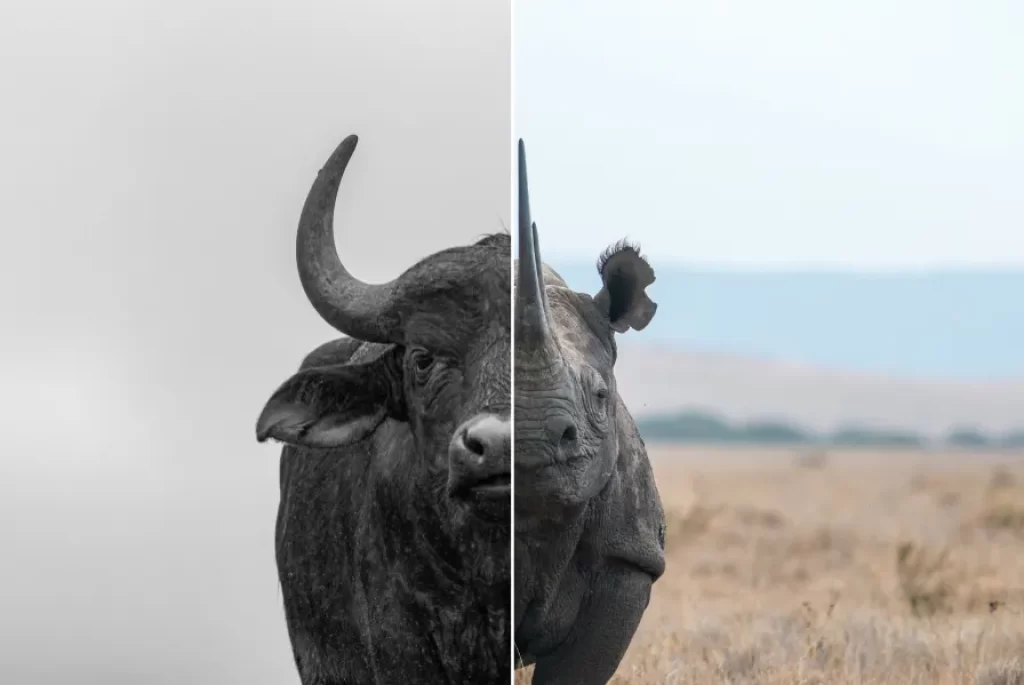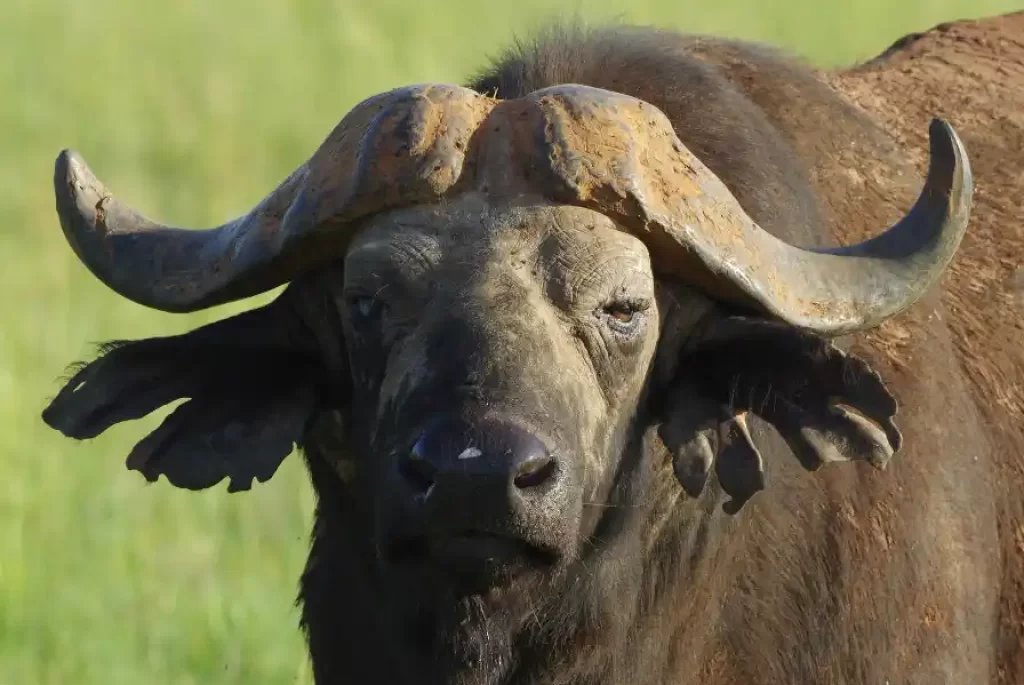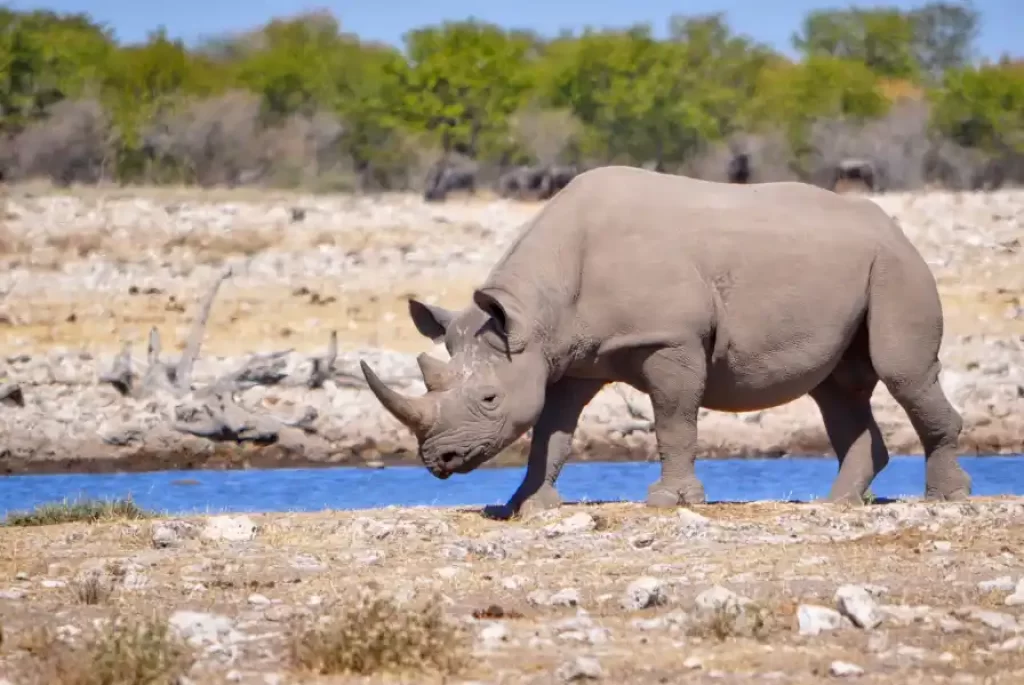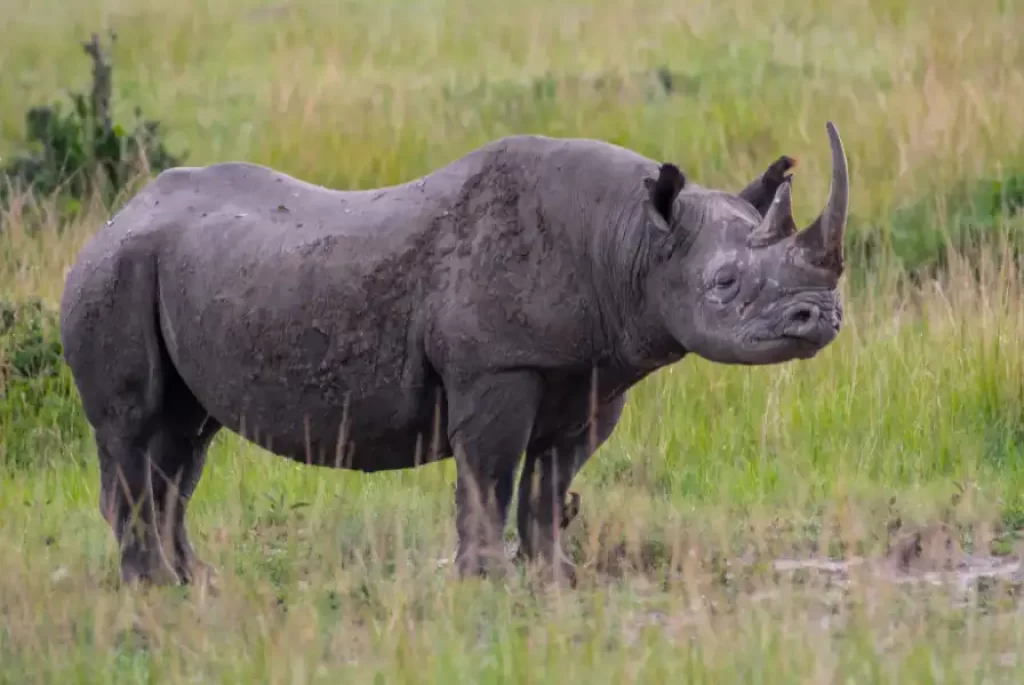Buffalo vs Rhino: Who Would Win in a Battle?
The animal kingdom is full of incredible creatures, each with its unique strengths and weaknesses.
Among the many animals that roam the earth, two of the most impressive are the buffalo and the rhinoceros. But if these two beasts were to face off against each other, which one would emerge victorious?
Note: It’s important to note that in nature, these two species would rarely encounter each other and would likely avoid confrontation if possible.
| Traits | Buffalos | Rhinoceroses |
|---|---|---|
| Size | Medium-large (600-1200 kg) | Large (up to 2500 kg) |
| Skin | Tough and durable, but less thick compared to rhinos | Thick and difficult to penetrate, with a unique dermal armor made of collagen fibers |
| Horn | No sharp horn, but males may have curved and thickened horns | Sharp horn that can grow up to 5 feet, made of keratin (the same material as human nails) |
| Aggression | Known for their aggressive behavior when threatened, and may charge at opponents | Can be extremely aggressive when threatened, and may attack without warning |
| Running speed | Slower compared to rhinos, with a top speed of around 30 miles per hour | Can run up to 30 miles per hour, making them one of the fastest land animals |
| Senses | Have a good sense of hearing and smell, which helps them detect potential dangers and avoid them | Have a keen sense of smell and hearing, and their eyesight is also good enough to detect predators |
| Threats | Poaching for their meat and hides, habitat loss, and competition with domestic livestock | Poaching for their horn (which is highly valued in traditional medicine), habitat loss, and competition with humans and domestic livestock |
Overview of Buffalos and Rhinoceroses

Buffalos and rhinoceroses are both large, powerful mammals that are native to different regions of the world. Buffalos are found in many parts of the world, including Africa and Asia, and come in different species such as water buffalos and cape buffalos.
They are herbivores and typically live in large herds. In contrast, rhinoceroses are found mainly in Africa and Asia, and there are five different species of rhinos, including the white rhino, black rhino, and Indian rhino.
Rhinos are also herbivores and are known for their tough skin and sharp horn, which they use for defense against predators.
Strengths of Buffalos
Buffalos are known for their physical strength and their ability to charge at opponents. They have a muscular build that allows them to take down predators, and they are known for their aggressive behavior when they feel threatened.

Buffalos also have a good sense of hearing and smell, which helps them detect potential dangers and avoid them.
In addition to their physical strength and aggressive behavior, buffalos have several other strengths that have helped them thrive in their natural habitats:
Adaptability:
Buffalos can adapt to a variety of habitats, ranging from grasslands to forests. They are also able to survive in harsh climates, such as extreme heat or cold.
Social behavior:
Buffalos live in herds, which can consist of hundreds or even thousands of individuals. Their social behavior helps them protect themselves from predators, as well as find food and water sources.
Endurance:
Buffalos are able to travel long distances in search of food and water. They can also go for long periods without drinking water, which is important in areas where water sources are scarce.
Disease resistance: Buffalos have a strong immune system, which makes them less susceptible to diseases that can affect other animals.
Strengths of Rhinoceroses

Rhinoceroses are one of the largest land animals, with some species weighing over 2,500 kg. They are known for their tough skin, which is difficult to penetrate, especially around their neck and head regions where they are most vulnerable.
Rhinos also have a sharp horn that can grow up to 5 feet in length and can be used for defense against predators. Additionally, rhinos have a good sense of smell and hearing, which helps them detect potential dangers and avoid them.
Apart from their physical traits, rhinoceroses have several other strengths that help them thrive in their habitats:
Adaptability:
Rhinoceroses can survive in a range of habitats, from grasslands to dense forests. They are also able to withstand extreme temperatures and can adapt to changing environmental conditions.
Diet:
Rhinoceroses are herbivores and have a specialized digestive system that allows them to extract maximum nutrition from plants, including tough and fibrous ones.
Social behavior:
Rhinos have a complex social structure, with some species forming groups of up to 14 individuals. They communicate with each other through vocalizations and body language, which helps them coordinate their activities, defend their territory, and protect their young.
Longevity:
Rhinoceroses have a long lifespan, with some species living up to 50 years in the wild. This is due to their robust immune system, which helps them fight off diseases and infections.
Buffalos and rhinoceroses are both impressive animals with unique strengths and weaknesses. Here are some advantages and disadvantages of each animal:
Buffalos
Advantages:
- Muscular build that allows them to take down predators
- Aggressive behavior when threatened
- Good sense of hearing and smell to detect potential dangers
Disadvantages:
- Lack of a sharp horn for defense
- Less tough skin compared to rhinos
- Relatively slower running speed
Rhinoceroses
Advantages:
- Thick skin that is difficult to penetrate, especially around their neck and head regions
- Sharp horn that can be used for defense against predators
- Good sense of smell and hearing to detect potential dangers
- Can run at high speeds of up to 30 miles per hour
Disadvantages:
- Can be prone to poaching due to the high value of their horn in traditional medicine
- Large size can make them vulnerable to habitat loss and fragmentation
- Aggressive behavior when threatened, which can lead to injury or death
Both animals have unique strengths and weaknesses that make them well-adapted to their respective habitats. While the rhino may have the advantage in terms of physical defense, the buffalo’s aggressive behavior and strong build are also formidable in their own right.
Hypothetical Battle
In a hypothetical battle between a buffalo and a rhinoceros, the outcome would ultimately depend on the circumstances of the encounter. If the buffalo were able to launch a surprise attack, catch the rhino off guard, or rally a large group of fellow buffalos, it could potentially overpower the rhino.
Buffalos are known for their strength and aggressive behavior, and they can run at high speeds of up to 35 miles per hour.
On the other hand, if the rhino were to use its formidable horn to strike the buffalo, it could cause serious injury or death.
Rhinoceroses have thick skin that is difficult to penetrate, especially around the neck and head regions where they are most vulnerable. They also have a good sense of hearing and smell, which helps them detect potential dangers and avoid them.
Real battle caught on Video
The winner

Both buffalos and rhinoceroses are impressive animals with unique strengths and weaknesses. While it’s impossible to say for certain who would win in a hypothetical battle between the two, it’s likely that the rhino would have the advantage due to its size, strength, and formidable horn. Nevertheless, both animals are incredible creatures that deserve our admiration and respect.






